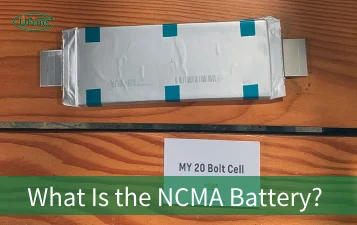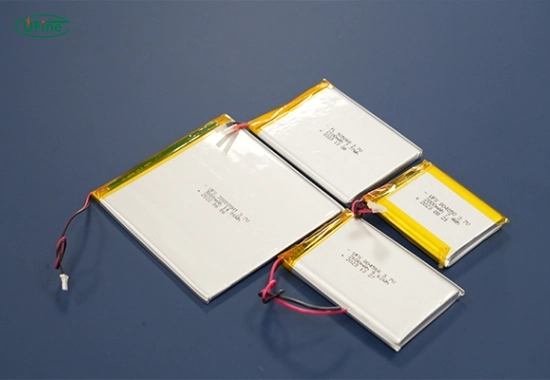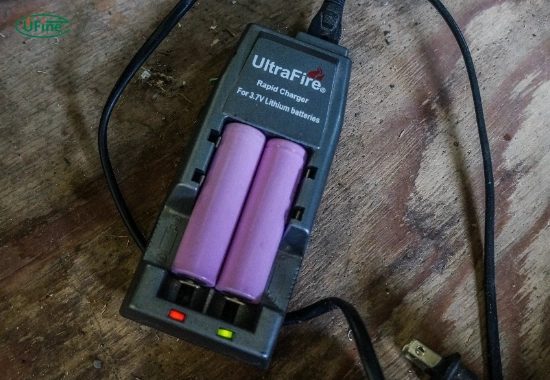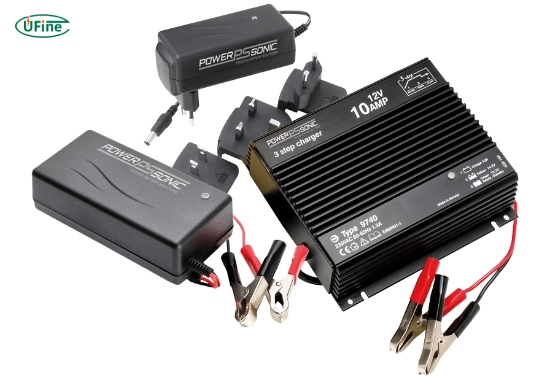
- Part 1. What is a lithium battery?
- Part 2. How does a normal charger work?
- Part 3. Why can't a normal charger charge a lithium battery?
- Part 4. What are the risks of using a normal charger for lithium batteries?
- Part 5. What type of charger should you use for lithium batteries?
- Part 6. Can you use a universal charger for lithium batteries?
- Part 7. How to properly charge a lithium battery?
- Part 8. What happens if you charge a lithium battery incorrectly?
- Part 9. Common misconceptions about charging lithium batteries
- Part 10. FAQs
Lithium batteries have become increasingly popular due to their lightweight design, long lifespan, and ability to hold a high energy density. They are a reliable power source for electric vehicles, solar power systems, and portable devices. However, a common question arises: Can you charge a lithium battery with a standard charger?
The simple answer is no. You generally shouldn’t use a normal charger to charge a lithium battery. Lithium batteries require specific charging profiles to ensure safety and longevity, which most conventional chargers don’t provide. This article will explore why this is the case, the risks involved, and the alternatives to charging lithium batteries safely.
Part 1. What is a lithium battery?
Lithium batteries are rechargeable batteries that use lithium ions for energy storage and transfer. They are widely used in applications like smartphones, laptops, electric vehicles, and renewable energy systems because they are compact, efficient, and durable.
Lithium batteries are designed with advanced charging and discharging mechanisms, unlike traditional lead-acid batteries. They require precise voltage and current regulation to function optimally, making their charging process more complex.
Part 2. How does a normal charger work?
A standard charger, such as those used for lead-acid or NiMH batteries, typically follows a two-stage or three-stage charging process. These chargers provide a constant current in the initial stage and switch to a continuous voltage stage as the battery nears full charge.
While this method works for traditional batteries, it doesn’t align with the precise requirements of lithium batteries. Normal chargers often lack the advanced circuitry needed to monitor and regulate the charging phases that lithium batteries demand.
Part 3. Why can’t a normal charger charge a lithium battery?
Lithium batteries require a specific charging profile, including precise voltage limits, current control, and temperature monitoring. Here’s why a normal charger won’t work:
- Voltage Incompatibility: Lithium batteries have a strict voltage range (typically 4.2V per cell). Exceeding this range can damage the battery or cause safety risks like overheating.
- Lack of Protection Circuits: Lithium batteries need built-in protection circuits to prevent overcharging, over-discharging, and short circuits. Normal chargers don’t account for these safeguards.
- Current Regulation: Lithium batteries require a steady current during charging. A normal charger may provide an inconsistent current, which can degrade the battery over time.
- Risk of Thermal Runaway: Without proper regulation, a lithium battery can overheat and lead to thermal runaway, posing a fire hazard.
Using a normal charger can significantly reduce the lifespan of your lithium battery or even render it unusable.
Part 4. What are the risks of using a normal charger for lithium batteries?
Using a normal charger for lithium batteries comes with several risks, including:
- Overcharging: A normal charger may overcharge the battery without proper voltage regulation, leading to overheating or damage.
- Capacity Loss: Improper charging can reduce the battery’s ability to hold a charge, decreasing its overall capacity over time.
- Safety Hazards: Overcharging or overheating can cause the battery to swell, leak, or even catch fire.
- Shortened Lifespan: Lithium batteries are designed for a specific number of charge cycles. Using an incompatible charger can reduce the number of cycles the battery can handle.
These risks underscore the importance of using a charger specifically designed for lithium batteries.
Part 5. What type of charger should you use for lithium batteries?
You need a lithium-specific charger to safely and effectively charge a lithium battery. These chargers meet the unique requirements of lithium batteries. Features of a lithium battery charger include:
- Voltage Regulation: Ensures the charger charges the battery within its safe voltage range.
- Constant Current/Constant Voltage (CC/CV) Charging: This charging method initially provides a steady current and then switches to a constant voltage phase.
- Temperature Monitoring: Prevents overheating by monitoring the battery’s temperature during charging.
- Built-In Safety Features: Protections against overcharging, over-discharging, and short circuits.
Investing in a lithium-specific charger is the best way to prolong the life of your battery and ensure safe operation.
Part 6. Can you use a universal charger for lithium batteries?
Some modern universal chargers are compatible with lithium batteries. However, verifying that the charger supports lithium-ion chemistry and has the appropriate voltage and current settings for your specific battery is crucial.
If the universal charger lacks these features, it’s better to avoid using it as it could harm your lithium battery.
Part 7. How to properly charge a lithium battery?
To charge a lithium battery correctly, follow these steps:
- Use a Lithium Charger: Always use a charger specifically for lithium batteries.
- Follow Manufacturer Guidelines: Check the battery’s specifications for recommended voltage and current levels.
- Avoid Overcharging: Disconnect the charger once it fully charges the battery. Most lithium chargers have an auto-shutoff feature.
- Charge at Room Temperature: Avoid charging the battery in extreme temperatures to prevent swelling or capacity loss.
By following these guidelines, you can maximize the performance and lifespan of your lithium battery.
How to Charge Lithium Ion Battery Without Charger?
Part 8. What happens if you charge a lithium battery incorrectly?
Charging a lithium battery in the wrong way can lead to several issues, including:
- Reduced Capacity: The battery may not hold a full charge.
- Increased Heat: Overcharging can cause the battery to overheat, leading to swelling or even explosion.
- Permanent Damage: Repeated misuse can render the battery unusable.
Always use the right charger and follow proper charging practices to avoid these issues.
Part 9. Common misconceptions about charging lithium batteries
There are many misconceptions about charging lithium batteries. Here are a few clarified:
Myth: Any charger will work for a lithium battery.
- Fact: Only a charger designed for lithium batteries can ensure safe and efficient charging.
Myth: It’s okay to overcharge a lithium battery occasionally.
- Fact: Overcharging can permanently damage the battery and pose safety risks.
Myth: Lithium batteries don’t need maintenance.
- Fact: While low maintenance, proper charging and storage practices are essential for longevity.
Part 10. FAQs
-
Can I use a lead-acid charger for a lithium battery?
Lead-acid chargers are incompatible with lithium batteries because they lack the required precise voltage and current regulation. -
What happens if I overcharge a lithium battery?
Overcharging can cause overheating, swelling, and potentially fire hazards. It also reduces the battery’s lifespan. -
Can I charge a lithium battery with a solar charger?
Yes, but the solar charger must be compatible with lithium batteries and have the correct voltage and current settings. -
Is it safe to leave a lithium battery on the charger overnight?
While modern lithium chargers have safety features, it’s best to avoid leaving the battery on charge for extended periods to ensure safety. -
How do I know if my charger is compatible with lithium batteries?
Check the charger’s specifications to ensure it supports lithium-ion chemistry and matches the battery’s voltage and current requirements.
Related Tags:
More Articles

What is the NCMA battery? What is the difference between it and the NMC battery? Which one is better? This article will answer your questions.
What Is the Lithium Battery Short Circuit?
What is the lithium battery short circuit? To understand a lithium battery short circuit, we first need to understand how the battery works.
How to Distinguish Battery Cells, Battery Modules, And Battery Packs?
Discover how battery cells, modules, and packs work, their engineering roles, and practical guidance for safe and efficient design.
What is the Difference Between Silver Zinc Battery vs. Lithium-ion Rechargeable?
Compare silver zinc and lithium-ion rechargeable batteries: energy density, cycle life, safety, cost, and uses in drones, medical devices, EVs, and electronics.
What are Watts and Watt Hours in Battery?
Understand watt vs watt-hour in batteries: key differences, how to calculate capacity, and why they matter. Includes free comparison table.





